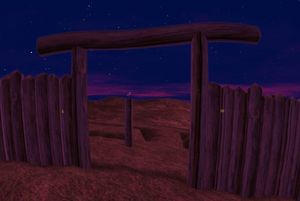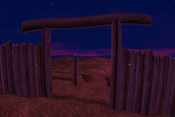Information
- Publication Type: Conference Paper
- Workgroup(s)/Project(s):
- Date: October 2005
- ISBN: 0-7803-9464-X
- Publisher: IEEE
- Location: Minneapolis
- Editor: John Stasko and Matt Ward
- Booktitle: Proceedings IEEE Symposium on Information Visualization
- Conference date: 23. October 2005 – 25. October 2005
- Pages: 9 – 16
- Keywords: data mining, Astronomy, Archaeology
Abstract
It has long been known that ancient temples were frequently oriented along the cardinal directions or to certain points along the horizon where Sun or Moon rise or set on special days of the year. In the last decades, archaeologists have found evidence of even older building structures buried in the soil, with doorways that also appear to have distinct orientations.This paper presents a novel diagram combining archaeological maps with a folded-apart, flattened view of the whole sky, showing the local horizon and the daily paths of sun, moon and brighter stars. By use of this diagram, interesting groupings of astronomical orientation directions, e.g. to certain sunrise and sunset points could be identified, which were evidently used to mark certain days of the year. Orientations to a few significant stars very likely indicated the beginning of the agricultural year in the middle neolithic period.
Additional Files and Images
Weblinks
No further information available.BibTeX
@inproceedings{Zotti-2005-vis,
title = "A Sky Dome Visualisation for Identification of Astronomical
Orientations",
author = "Georg Zotti and Eduard Gr\"{o}ller",
year = "2005",
abstract = " It has long been known that ancient temples were
frequently oriented along the cardinal directions or to
certain points along the horizon where Sun or Moon rise or
set on special days of the year. In the last decades,
archaeologists have found evidence of even older building
structures buried in the soil, with doorways that also
appear to have distinct orientations. This paper presents
a novel diagram combining archaeological maps with a
folded-apart, flattened view of the whole sky, showing the
local horizon and the daily paths of sun, moon and brighter
stars. By use of this diagram, interesting groupings of
astronomical orientation directions, e.g. to certain
sunrise and sunset points could be identified, which were
evidently used to mark certain days of the year.
Orientations to a few significant stars very likely
indicated the beginning of the agricultural year in the
middle neolithic period.",
month = oct,
isbn = "0-7803-9464-X",
publisher = "IEEE",
location = "Minneapolis",
editor = "John Stasko and Matt Ward",
booktitle = "Proceedings IEEE Symposium on Information Visualization",
pages = "9--16",
keywords = "data mining, Astronomy, Archaeology",
URL = "https://www.cg.tuwien.ac.at/research/publications/2005/Zotti-2005-vis/",
}




